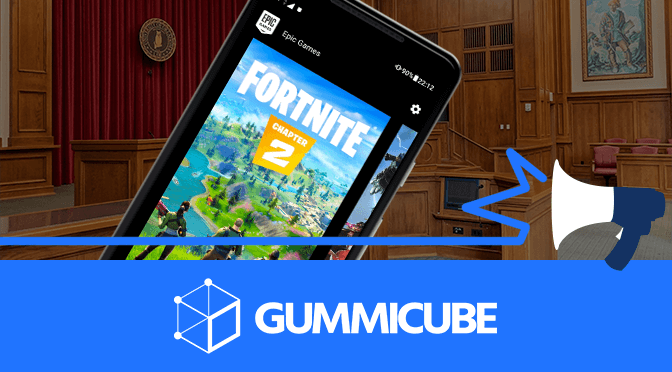Mobile Gaming Trends at GDC 2019
March 26th, 2019


by David Quinn
VP of Strategy & Partnerships at Gummicube, Inc.
With the 2019 Game Developers Conference (GDC) concluding another successful year, attendees left with new insights and looks at the latest in gaming of all shapes and sizes. Everything gaming related was on display, from large studios showcasing their latest games to advancements in virtual reality, and especially the latest in mobile gaming. These are some trends in mobile gaming showcased at GDC, and how developers can use App Store Optimization to capitalize on them.
Augmented Reality
Augmented reality (AR) continues to drive innovation in the mobile space. Developers showcased several new games utilizing AR features, such as Wonderscope, while continuing to test the applications of the technology.
At Google’s booth, for instance, attendees could play a real-life game of Pac-Man. Two to three players were placed in an area and given phones mounted on controllers shaped like Pac-Man, where they could then use the AR camera to look around for pellets to collect and avoid oncoming ghosts. What made this interesting was the multiplayer experience – the games shared information with a server, which synced up where the ghosts and pellets were located with the playing and a map screen. Players moving within the game space saw the borders, pellets and ghosts, while onlookers could see how they were progressing from a different vantage point. If a player got killed by a ghost, they could respawn by high-fiving the technician.

AR technology has been around for a while, but its growth within the mobile space has continued consistently. As GDC demonstrated, there are always new ways to utilize the technology for mobile games.
Cross-Play
Perhaps the biggest advancement in mobile gaming technology at GDC was the introduction of tools and technology that enabled people to play the same game across multiple devices. This took several forms, but all indicated a desire for a more connected experience for players everywhere.
The most anticipated announcement was Google’s Stadia, a gaming service that is designed to work on any device with a Chrome browser and an internet connection. This would allow a single person to access Stadia games on their computer, console or mobile device. It’s Google’s way of entering not only the mobile gaming market, but the PC and console markets as well at once.
Epic Games also drew attention with the announcement of Epic Online Services. This is designed to let developers create games playable on mobile devices, consoles and PCs without a change in gameplay or quality. Each game on Epic Online Services is designed to connect and play with each other, so three friends could be playing the same game on their iPhone, Xbox and computer and work together across the disparate devices.
Those were far from the only companies enabling cross-play. Microsoft announced its Project xCloud, its own efforts at making high-end games playable on mobile devices. The company has been pushing to integrate Xbox Live features into mobile titles, pushing forward with its “Play Anywhere” initiative.
Microsoft also demonstrated Azure Playfab, a backend platform for live games, and showcased how it can work across devices. To demonstrate this, it showed a single game on different consoles and mobile devices where the scores were synced, shared and compared across each one. Players could also try a game on two different systems, while using the same in-game voice chat to communicate and coordinate across devices.

Panel Sessions
Throughout the weekend, the panels at GDC provided game developers with a chance to learn from the industry leaders or share their experiences. GDC’s Mobile Games Summit offered sessions covering all aspects of mobile gaming.
Niantic, creators of Pokémon GO, held a session on adding real-time combat to their mobile game. Another session covered stories of soft launches and playable ads, important topics for mobile marketing. As location-based games are growing in use, combined with the advancements in augmented reality, Next Games hosted a panel on location-based gameplay and social games.
GDC’s panel sessions provided developers with valuable insights into the mobile market and development of mobile games. Throughout the weekend, it was made abundantly clear that mobile gaming continues to grow in reach and competition.
Mobile Games Need ASO
Gummicube was present at GDC 2019 for one key reason: mobile games need App Store Optimization if they want to be competitive on the App Store and Google Play Store. With the advancements in trends and technology, developers need to know how to utilize ASO best practices to capitalize on the trends.
For instance, as augmented reality games continue to grow, developers should understand the best practices for showcasing their AR features and ranking in searches for “augmented reality app.” The AR game market has been growing steadily, so optimizing an app to compete in that field can give an app an edge against competitors that aren’t optimized.
Cross-play is a new term that may soon be seeing an uptick in traffic as the technology develops to enable players to find games they love across devices or sync their mobile and console games. It’s important to find how users are searching for these games and how to format creative sets and descriptions to showcase the cross-platform play features the app has to offer.
The 2019 Game Developers Conference made it clear that mobile gaming is on the rise. If developers want to stay competitive, they’ll need to utilize App Store Optimization as part of their mobile marketing strategy.
Similar Articles

Posted on August 15th, 2020
Every time a user makes an in-app purchase or buys an app from the App Store or Play Store, Apple or Google takes a portion of the revenue. This App Store Tax has caused complaints for some developers, but with Apple and Google in the middle of antitrust hearings, tensions are continuing to grow.

Posted on August 8th, 2020
Apple has a strict set of App Store Guidelines that developers must follow in order to avoid being removed. Recently, it was announced that the guidelines will prevent developers from selling cloud gaming apps on the App Store. This could have an impact on app marketing, development and App Store Optimization.

Posted on July 7th, 2020
Apple Arcade, the App Store’s subscription game service, provides users with unlimited access to over 100 games for the price of $4.99 a month. Yet Apple can afford to be choosy, as it's cancelling several Arcade game contracts in the company’s effort to maintain subscribers.







